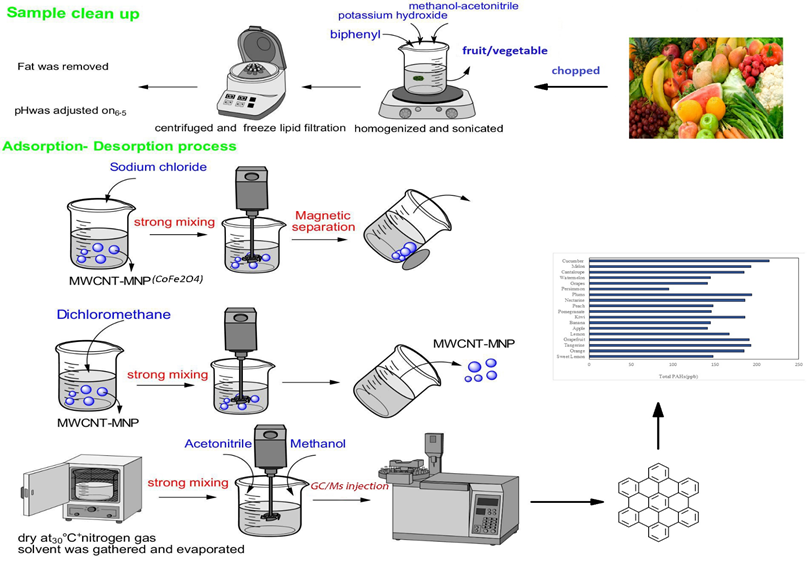
The aim of current study was to evaluate the polycyclic aromatic hydrocarbons (PAHs) concentration and probabilistic health risk in vegetables and fruits samples of Tehran city, Iran during 2018-2019 using magnetic solid-phase extraction (MSPE)and gas chromatography-mass spectrometry(GC-MS).The limit of detection (LOD) and limit of quantitation (LOQ) ranged 0.040-0.084 and 0.121-0.253 μg/kg, respectively. The results showed that the highest PAH levels corresponded to acenaphthene(135.1±7.1µg/kg) and naphthalene (114.1±5.0 µg/kg) , whereas the lowest concentrations were those of Benzo(a)pyrene (not detected), Benzo(k)fluoranthene (not detected), Indeno(l,2,3-cd)pyrene (not detected), Benzo(b)fluoranthene (not detected) and Benzo(g,h,i)perylene (not detected). Hierarchical cluster analysis (HCA) and principal component analysis (PCA) were applied to evaluate the correlation between the type and amount of 16 PAHs with vegetables and fruits samples. The results of Monte Carlo Simulation (MCS) revealed that the mean of incremental lifetime cancer risk (ILCR) in vegetables and fruits is 5.2×10-5 and 7.7×10-5higher than the acceptable risk level (10-6). Finally, the highest ILCR in fruits and vegetables was related to cucumber (5.1×10-4) and tomato (4.3×10-4), respectively. Therefore, monitoring the PAHs concentrations in both groups of vegetables and fruits is necessary.
Total file downloads: 7